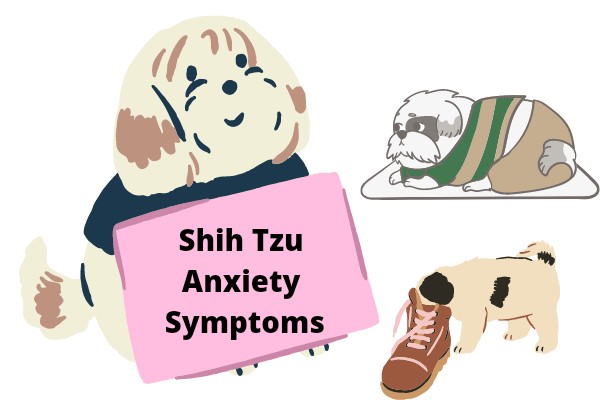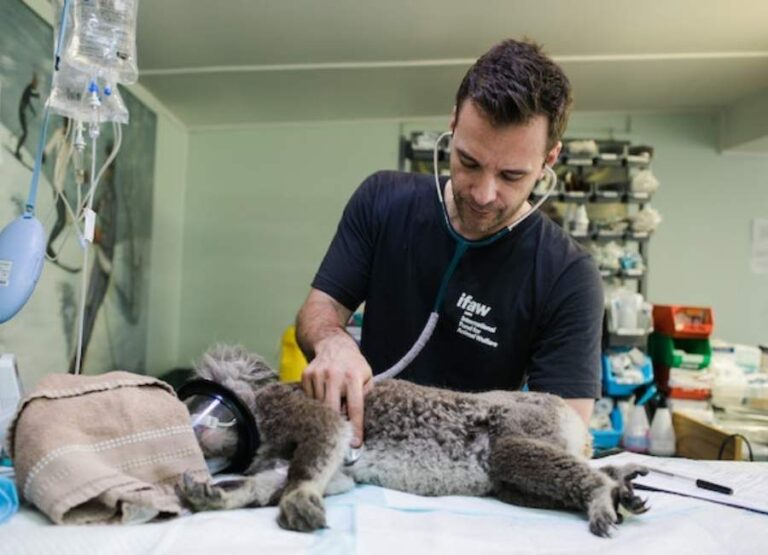Head Trauma in Dogs [Signs, Causes & Treatment]
![Head Trauma in Dogs [Signs, Causes & Treatment] Head Trauma in Dogs](https://petcreeks.com/wp-content/uploads/2023/12/pexels-mikhail-nilov-7469230.jpg)
Today, let’s tackle a serious topic that every dog owner should be aware of: head trauma in dogs.
It’s a scary thought, but accidents happen, and our furry friends aren’t immune to them.
So, grab a cup of coffee and join me as we dive into this important discussion on how to recognize, prevent, and treat head injuries in our beloved canine companions.
What is Head Trauma in Dogs?
Head trauma in dogs refers to any injury to the head or brain, which can occur due to various reasons such as accidents, falls, or physical abuse.
Symptoms of head trauma in dogs may include disorientation, seizures, loss of consciousness, and abnormal behavior.
It’s crucial to seek immediate veterinary care if head trauma is suspected, as it can lead to serious complications and requires prompt evaluation and treatment.
Causes of Head Trauma in Dogs
![Head Trauma in Dogs [Signs, Causes & Treatment] Causes of Head Trauma in Dogs](https://petcreeks.com/wp-content/uploads/2023/12/pexels-mikhail-nilov-7469222.jpg)
Head trauma in dogs can be caused by various incidents such as car accidents, falls, animal attacks, or blunt force trauma.
It’s important to keep a close eye on your furry friend to prevent such accidents.
Let’s break it down further…
1. Car Accidents: Dogs can be at risk of being hit by cars when they are allowed to roam freely near roads or are not kept on a leash.
Even when inside a vehicle, if not properly restrained, sudden stops or accidents can cause head trauma for the dog.
It’s crucial to always keep dogs on a leash when outside, especially near roads, and to use appropriate restraints, such as harnesses or crates when traveling in a vehicle.
2. Falls: Dogs, especially those with a strong prey drive or those who are curious and adventurous, may be at risk of falling from heights.
Balconies, stairs, and furniture pose potential hazards, especially for puppies, small breeds, or older dogs with mobility issues.
Pet owners should take steps to secure these areas and provide safe, stable environments for their dogs.
3. Physical Abuse: Sadly, some dogs may experience head trauma due to physical abuse, whether intentional or accidental.
This can include hitting, kicking, or other forms of physical mistreatment.
It’s important for pet owners to provide a loving and safe environment for their dogs and to seek professional help if they suspect abuse.
4. Collisions: Dogs can collide with other animals, objects, or even during vigorous play, leading to head injuries.
This risk is particularly high during high-energy activities like fetch, roughhousing, or encounters with other animals.
Supervision and training can help minimize the risk of collisions and provide a safer environment for dogs to play and exercise.
5. Toxins: Ingesting toxic substances such as certain plants, chemicals, or medications can lead to neurological issues and head trauma in dogs.
It’s important for pet owners to be aware of potential toxins in their environment and to keep harmful substances out of reach of their pets.
Quick action and seeking veterinary care are crucial if ingestion of a toxic substance is suspected.
6. Fights: When dogs get into fights with other animals, especially if it’s a larger, more aggressive opponent, head trauma can occur.
This is particularly common during encounters with other dogs, wild animals, or in some cases, even livestock.
Proper training, socialization, and supervision can help reduce the risk of such encounters and prevent potential head injuries.
Signs of head trauma in dogs
![Head Trauma in Dogs [Signs, Causes & Treatment] Signs of head trauma in dogs](https://petcreeks.com/wp-content/uploads/2023/12/pexels-mikhail-nilov-7474851.jpg)
Look out for symptoms like disorientation, loss of balance, seizures, dilated pupils, unconsciousness, and abnormal behavior.
If you notice any of these signs, it’s crucial to seek veterinary attention immediately.
Let’s break it down further…
1. Loss of Consciousness: Loss of consciousness can be a clear indicator of head trauma in dogs. This can range from a brief period of disorientation to a prolonged coma-like state. It’s important to note that loss of consciousness can be a medical emergency and requires immediate veterinary attention.
2. Abnormal Eye Movements: Dogs with head trauma may exhibit abnormal eye movements, such as nystagmus (involuntary rapid eye movements), dilated or constricted pupils, or a lack of response to visual stimuli. These eye movements can indicate damage to the brain or nervous system and should be evaluated by a veterinarian.
3. Seizures: Seizures can be a frightening manifestation of head trauma in dogs. Seizures may present as involuntary muscle twitching, convulsions, or loss of consciousness. Seizures can vary in severity and duration, and immediate veterinary care is essential to manage and diagnose the underlying cause.
4. Behavioral Changes: Head trauma can cause significant behavioral changes in dogs. This may include increased aggression, confusion, disorientation, or uncharacteristic fearfulness. Additionally, dogs may exhibit unusual patterns of restlessness or lethargy and may seem disconnected from their surroundings.
5. Loss of Balance: Dogs with head trauma may struggle with maintaining their balance. This can result in stumbling, falling over, circling, or an inability to stand or walk. This sign is indicative of neurological impairment and necessitates immediate veterinary evaluation.
6. Visible Injuries: Head trauma in dogs can lead to visible injuries, such as cuts, bruises, or swelling on the head or face. These injuries may be accompanied by bleeding from the ears or nose, indicating trauma to the skull or brain.
7. Changes in Eating or Drinking Habits: Dogs with head trauma may exhibit changes in their eating or drinking habits. This can include a loss of appetite, difficulty swallowing, or an increased or decreased thirst. These changes can be indicative of neurological damage or discomfort and warrant veterinary assessment.
8. Unusual Vocalizations: Head trauma can lead to unusual vocalizations in dogs. This may include whimpering, whining, or excessive barking that is out of character for the dog. These vocalizations can indicate distress or pain and should be taken seriously.
Learn more about signs of head trauma in dogs.
Diagnosing Head Trauma in Dogs
When it comes to diagnosing head trauma in dogs, it’s crucial to watch out for symptoms like disorientation, loss of consciousness, seizures, or changes in behavior.
A thorough physical examination by a veterinarian can help assess the extent of the injury, including neurological function and any visible injuries.
Diagnostic tests such as X-rays, CT scans, or MRIs may be recommended to evaluate the internal structures of the head for fractures, bleeding, or brain swelling.
Blood tests can also provide valuable information about the dog’s overall health and potential complications.
Remember, early diagnosis and prompt medical attention are key to ensuring the best possible outcome for a dog with head trauma.
If you notice any concerning signs, don’t hesitate to seek professional help for your furry friend.
Treatment For Head Trauma in Dogs
![Head Trauma in Dogs [Signs, Causes & Treatment] Treatment For Head Trauma in Dogs](https://petcreeks.com/wp-content/uploads/2023/12/pexels-mikhail-nilov-7469233.jpg)
The treatment for head trauma in dogs requires prompt and comprehensive care.
Upon arrival at the veterinary clinic, the dog will undergo a thorough physical examination and diagnostic tests such as X-rays and CT scans to assess the extent of the injury.
Immediate stabilization may include oxygen therapy, intravenous fluids, and medication to control brain swelling and seizures.
Surgical intervention may be necessary to address fractures or internal bleeding.
After stabilizing the dog, the veterinarian will closely monitor for signs of improvement or complications.
Rehabilitation measures, including physical therapy and specialized care, may be implemented to aid in the dog’s recovery.
Follow-up care and ongoing monitoring are crucial to ensure the dog’s long-term well-being and quality of life.
Dog owners should closely follow the veterinarian’s instructions and provide a safe, quiet environment for the dog’s recovery.
Recovery and Prognosis
Recovery from head trauma in dogs can vary depending on the severity of the injury and the age of the pet.
Pets with more severe injuries, older pets, or those with pre-existing medical problems may have a less certain prognosis.
However, dogs are remarkably resilient to brain injury, and many can overcome even the most severe injuries.
Regular follow-up appointments and monitoring of the pet’s condition are essential for optimal recovery and long-term outcomes.
Related Questions
How is head trauma diagnosed in dogs?
A veterinarian will conduct a thorough physical examination and may also recommend diagnostic tests such as X-rays, CT scans, or MRIs to assess the extent of the head trauma and any associated injuries.
What is the treatment for head trauma in dogs?
The treatment for head trauma in dogs depends on the severity of the injury. It may include supportive care, medication for pain and swelling, and in some cases, surgery to address internal injuries.
What is the recovery process for dogs with head trauma?
Recovery varies based on the severity of the trauma. It may involve a period of rest, medication, and close monitoring for any changes in behavior or symptoms. Rehabilitation therapy may also be recommended.
How can head trauma in dogs be prevented?
To prevent head trauma in dogs, it’s essential to keep your dog on a leash during walks, secure them in a car or crate during travel, and create a safe environment at home to minimize the risk of falls or accidents.
Conclusion
In conclusion, protecting our furry friends from head trauma is crucial for their overall well-being. By being mindful of potential hazards and providing a safe environment, we can greatly reduce the risk of accidents. Remember, our dogs rely on us to keep them safe and healthy, so let’s do all we can to prevent head injuries and ensure their happiness for years to come.






